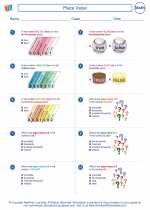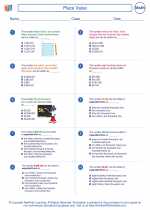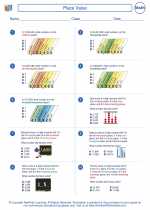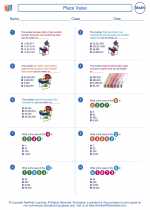Solving Equations
Solving equations is a fundamental skill in mathematics. It involves finding the value of the variable that makes the equation true. Equations can be solved using a variety of techniques, including inverse operations, balancing both sides of the equation, and applying the properties of equality.
Basic Steps for Solving Equations
- Identify the variable: Determine which letter represents the unknown value in the equation.
- Use inverse operations: Perform inverse operations to isolate the variable on one side of the equation. Inverse operations include addition and subtraction, multiplication and division.
- Check your answer: After solving for the variable, plug the value back into the original equation to verify that it satisfies the equation.
Examples of Solving Equations
Let's look at a few examples to illustrate the process of solving equations.
Example 1:
Solve for x: 2x + 5 = 11
Step 1: Identify the variable: In this equation, x is the variable that we want to solve for.
Step 2: Use inverse operations: Subtract 5 from both sides to isolate the variable. 2x = 11 - 5 = 6. Then, divide both sides by 2 to solve for x. x = 6 ÷ 2 = 3.
Step 3: Check your answer: Plug x = 3 back into the original equation to verify that it satisfies the equation. 2(3) + 5 = 11. The equation is true, so x = 3 is the correct solution.
Example 2:
Solve for y: 3y - 7 = 8
Step 1: Identify the variable: In this equation, y is the variable that we want to solve for.
Step 2: Use inverse operations: Add 7 to both sides to isolate the variable. 3y = 8 + 7 = 15. Then, divide both sides by 3 to solve for y. y = 15 ÷ 3 = 5.
Step 3: Check your answer: Plug y = 5 back into the original equation to verify that it satisfies the equation. 3(5) - 7 = 8. The equation is true, so y = 5 is the correct solution.
Study Guide
Here are some key points to remember when solving equations:
- Always perform the same operation on both sides of the equation to maintain equality.
- When using inverse operations, perform them in the reverse order of the original operation in the equation.
- When solving equations involving parentheses or brackets, use the distributive property to simplify the equation before applying inverse operations.
- Remember to check your solution by substituting the value back into the original equation.
Practice solving equations with different types of variables and operations to strengthen your understanding of this fundamental concept in mathematics.
.◂Math Worksheets and Study Guides Fifth Grade. Place Value

 Worksheet/Answer key
Worksheet/Answer key
 Worksheet/Answer key
Worksheet/Answer key
 Worksheet/Answer key
Worksheet/Answer key
 Worksheet/Answer key
Worksheet/Answer key
 Worksheet/Answer key
Worksheet/Answer key
 Worksheet/Answer key
Worksheet/Answer key
